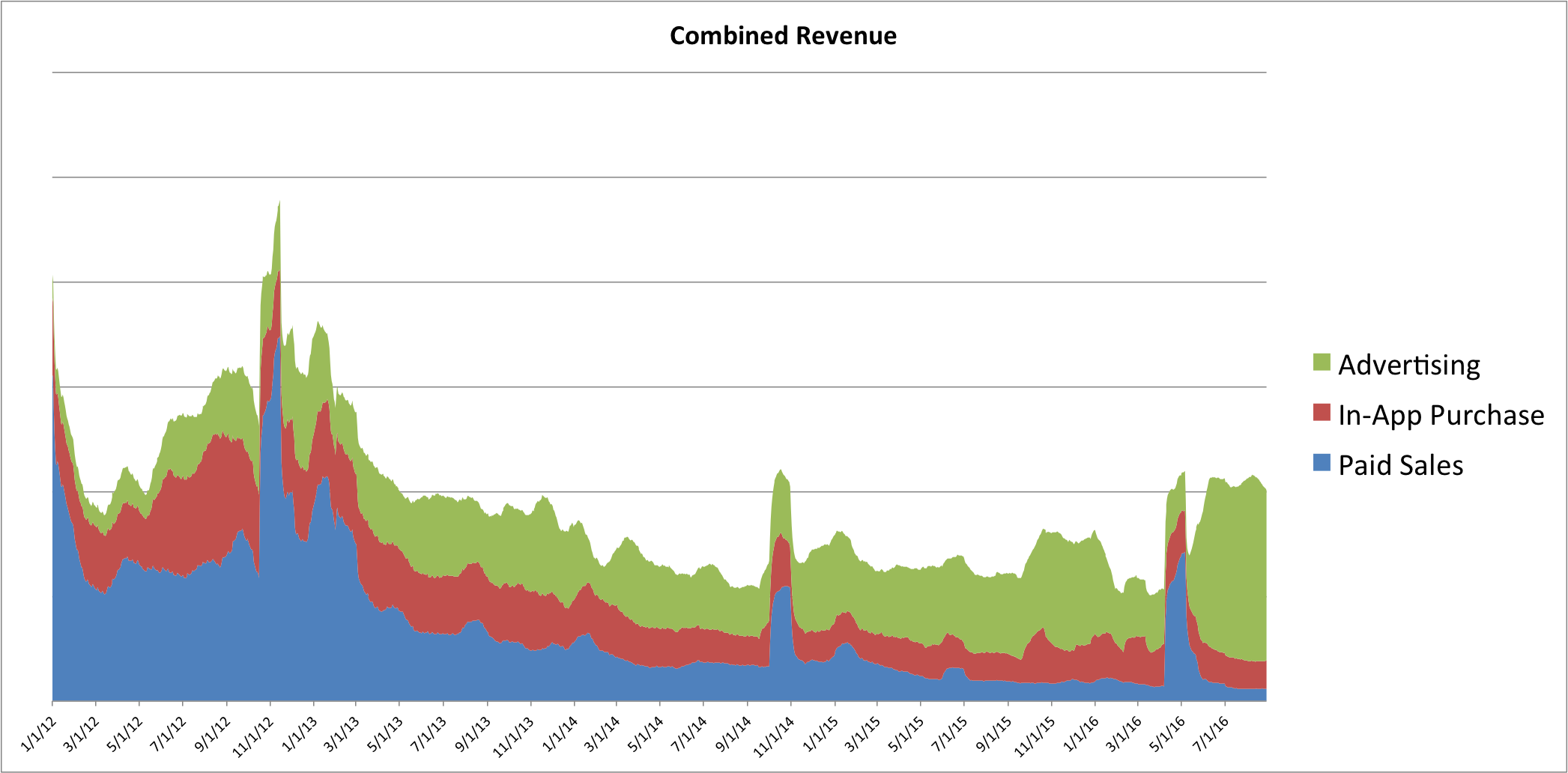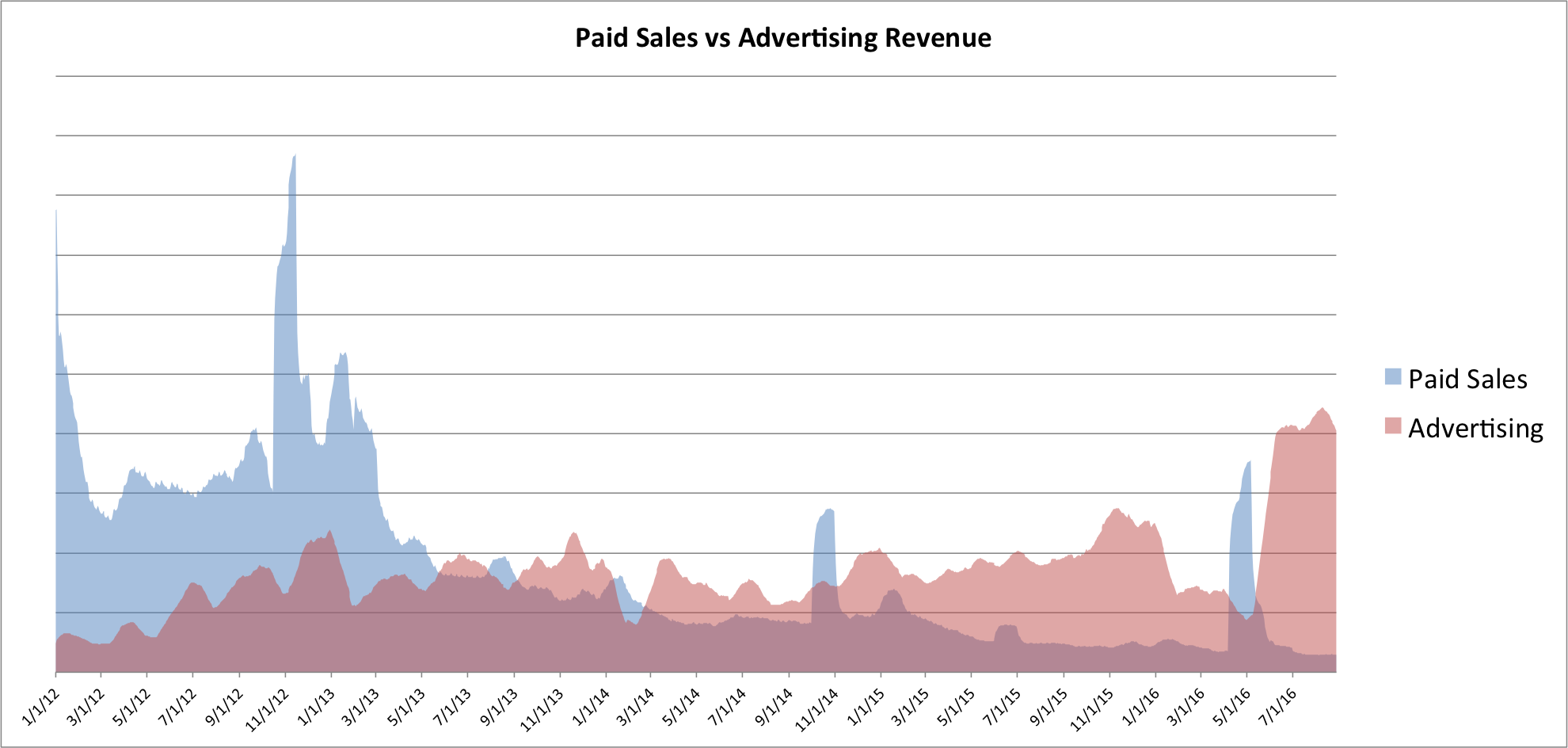I’ve been thinking this past week (as I often do) about the ever-changing landscape of the App Store. This year has seen some of the biggest changes in policy and structure that I can remember. We have new subscription pricing models, search ads, a substantial purge of older apps, new requirements for app names and a variety of little changes to the App Store app itself in iOS 10.
I won’t know how the sum of these changes will impact my business until probably later this fall, but it seemed like a good time to look back at the last several years and examine the path that brought me here.
On November 8th it will have been eight years since my first app went live in the App Store. Back when I started I would have been gobsmacked to hear that eight years later I’d still be making my living solely from apps.
The App Store ecosystem today is wildly different from what it was back then. I launched my first app into a store of around 90k apps; today we have well over 2 million. Back then we didn’t have advertising networks, in-app purchases or subscriptions. You were free or paid, and if you wanted to make a living you pretty much had to be paid.
Today things are quite different. Paid apps now make up a vanishingly small proportion of my income, and nearly all of my recent successes have come on the back of free apps. The transition between the two ends has not always been straightforward but I’ve focused hard on being adaptable and open-minded during the transition.
The Data
I can perhaps most simply show the evolution of my indie software business with this chart:

I don’t have solid data going all the way back to 2008 when I launched my first app, but I do from 2012. In the last 4.5 years the split of where my revenue comes from has followed a clear, inexorable march from being paid-based to advertising-based. Starting in 2012 advertising in my apps made up around 10% of sales whereas now it is nearly 80%. That increase has come almost entirely from a near collapse of my paid upfront sales (with my in-app purchase income largely unchanged).
The steadiness of this progression, which traces a near perfectly linear curve over the last few years, initially made me worried I’d goofed in the data analysis. But I’ve double checked my data and this is what my history looks like.
Now before all you data scientists out there start shouting about how awful a 100% stacked chart is since it is so easily tricked by changes in the overall totals, here is a bezos chart of overall revenue over that period:

The same trends are quite visible here too. Other than the spikes caused by the launch of new paid apps (for example, Emoji++ in Oct, 2014 and Activity++ in May, 2016) paid sales have been on a steady decline since roughly 2013. The absolute value of in-app purchase revenue has diminished somewhat but held steady since around 2014. While advertising revenue has been on a gradual but definite rise.
(The sizable jump in advertising revenue this year was caused by switching away from iAd to AdMob when Apple announced they were discontinuing that advertising platform. The dip in revenue from January to May of this year was caused by staying on iAd even when their rates started to slide, likely an early indication of the end of the service)
You can see the transition between paid and advertising even more easily when I stack the two together:

Conclusions
Now this is all just the experience of one developer. It doesn’t really paint a full and complete picture of the App Store. But nevertheless I think that my experiences are consistent with what I have heard from countless other developers of the last few years. I am living proof that it is still quite possible to make a solid and reliable income from the App Store. The way in which I have been able to do that, however, has been to change with the times and constantly adapt to the changes in the market.
When I was discussing this data with a few friends I was asked a rather incisive question “Is this a change in your attitude, or a change in how the market is pushing?” Whenever we look at history it is easy to see what you want to see. To cherry pick your interpretation or ascribe causation to simple chance.
As I have looked back on these last few years I’ve come to the conclusion that the change is mostly been in the App Store market, rather than in my own attitudes. In many cases adding advertising to my apps has been something I’ve fought and resisted as long as possible. But in the end the pragmatic answer has been to not swim upstream and instead follow where my customers have led.
The market has been pulling me along towards advertising based apps, and I’ve found that the less I fight back with anachronistic ideas about how software “should” be sold, the more sustainable a business I have.